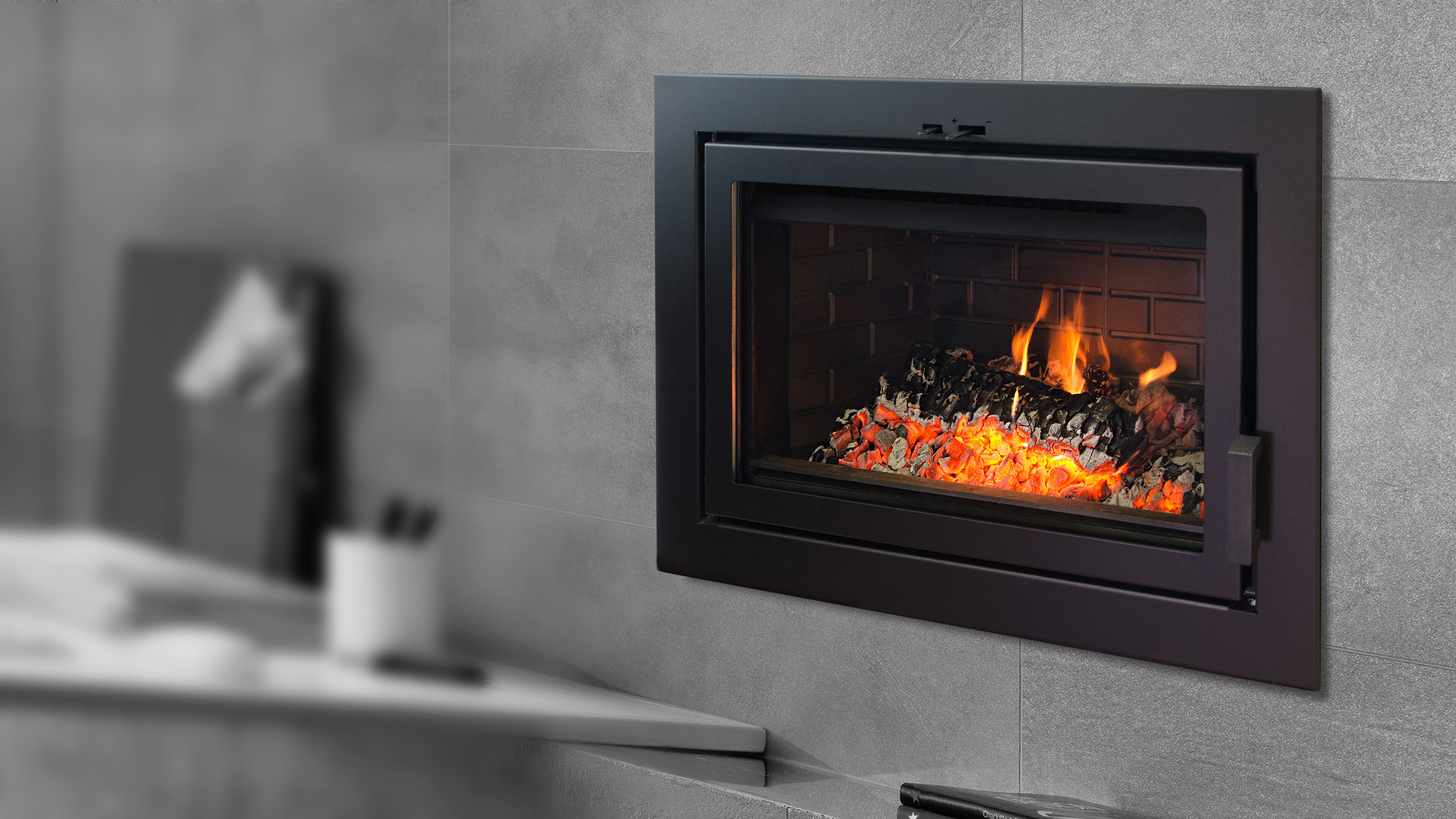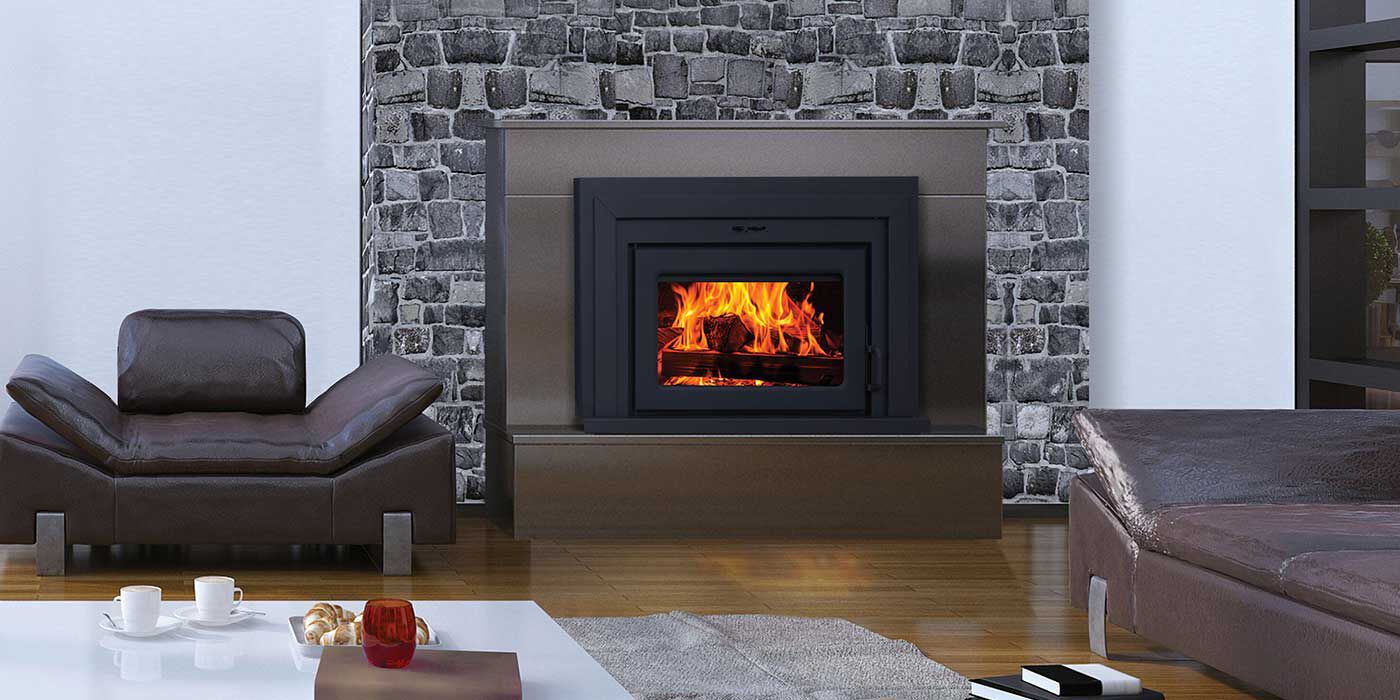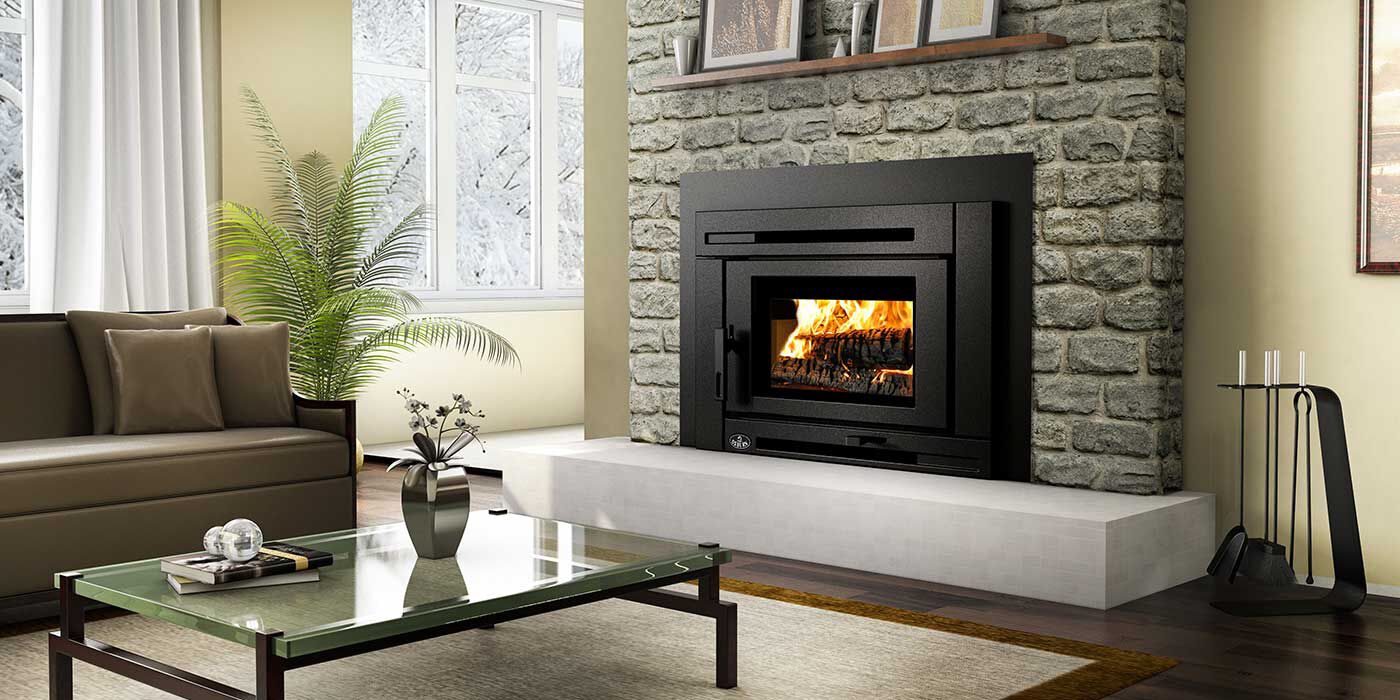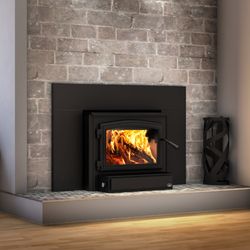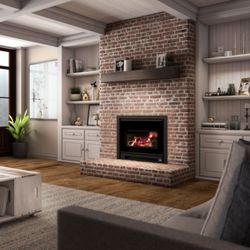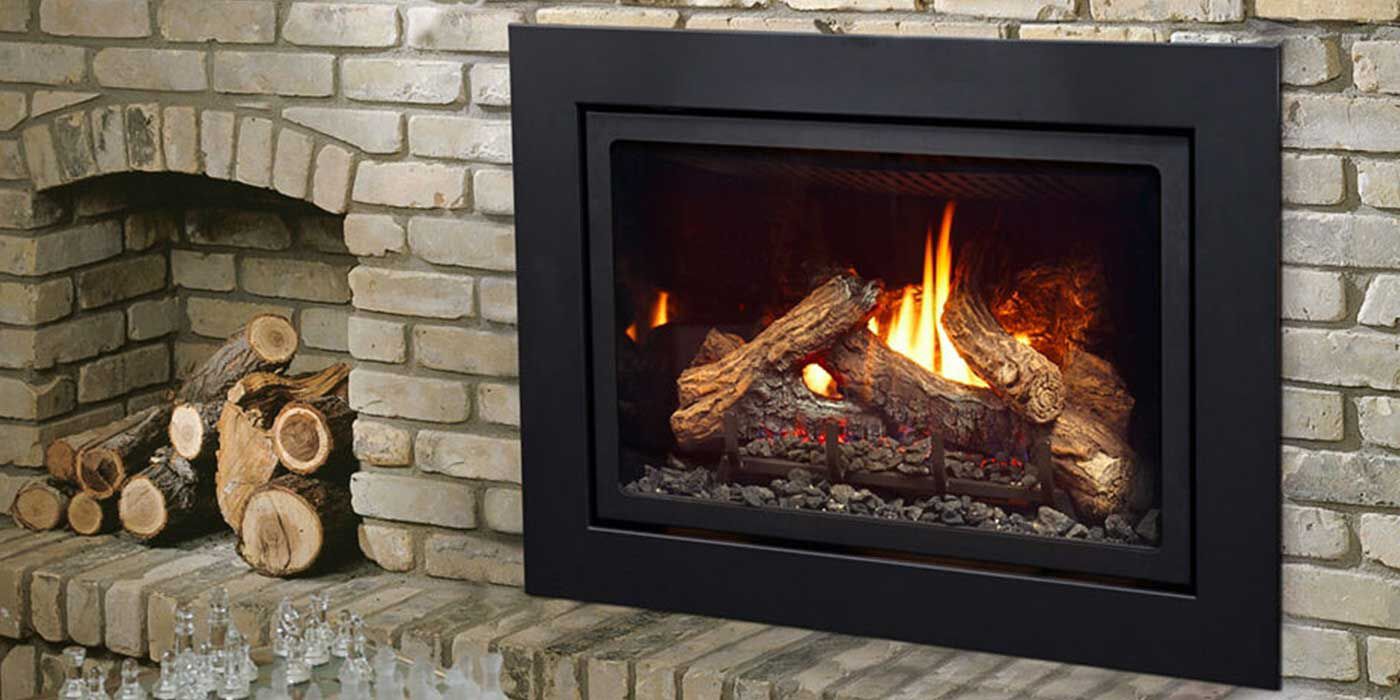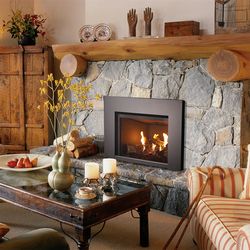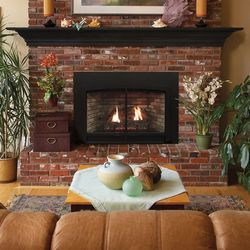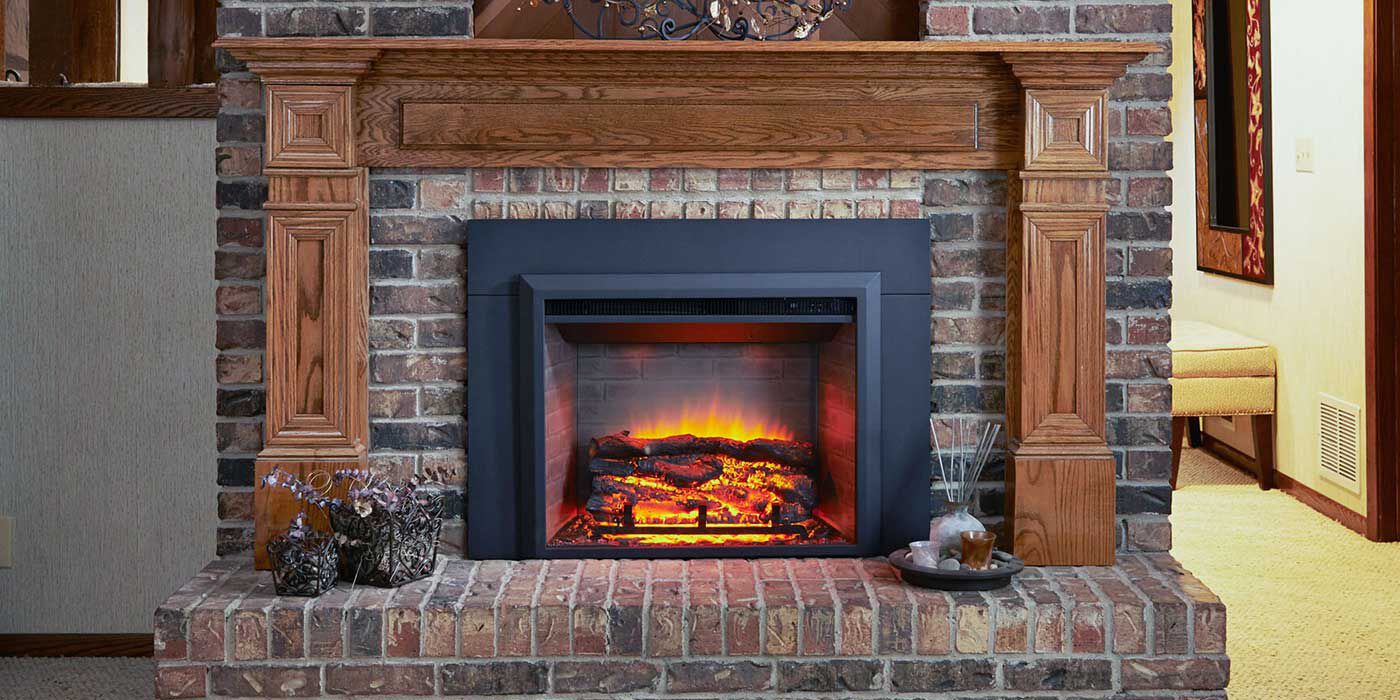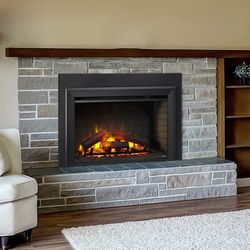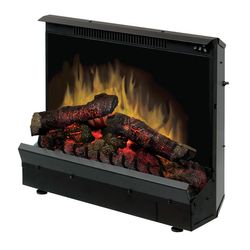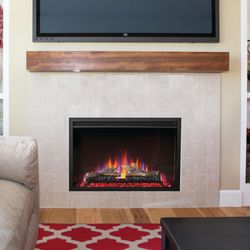By: Tom Regis, NFI Certified Master Hearth Professional
Last Updated: February 5. 2025
A fireplace insert can essentially be defined as a wood (or gas) stove without legs. Inserts are designed to fit inside existing fireplaces and consist of a metal box that gets “inserted” into the fireplace opening and finished with a decorative surround to create a seamless look.
A manufacturer-specific stainless steel chimney liner gets installed through the chimney and attaches to the insert, providing the proper clearances to combustibles and allowing combustion byproducts to exit the home safely.
Just like a wood stove, inserts use a closed system of combustion and are sealed off from the home by an insulated glass front (gas) or by an air-tight door (wood burning).
This allows the fire to burn at a slower rate effectively producing more heat, reducing emissions, and improving heating efficiency and heat output.
If you’re adding a fireplace to your home for the first time, you need a fireplace, not an insert. The finished project may look like the fireplace was “inserted” into the wall, but that’s only due to the fact that framing was built out around the fireplace.
If you’re updating an existing fireplace and plan on keeping the original structure in place, you need an insert.
What Kind of Insert is Best for Your Home?
Fireplace inserts are available in wood burning, gas, electric, and pellet fuels.
Wood Stove Inserts
If your existing wood burning fireplace needs an overhaul, but you don’t want to invest the time or money in a total renovation, a wood stove insert is an excellent solution.
Wood stove inserts maintain the look, feel, and ambiance of a wood fire while drastically improving heat output and reducing harmful byproducts and emissions. Most are EPA certified to meet the Environmental Protection Agency’s standards for 60-80% fuel-efficiency.
An air-tight door prevents smoke from spilling into the home and extends the life of the fire by as much as five hours.
Since more heat stays in the firebox, wood burning stove inserts require an insulated chimney liner to keep the flue warm enough to maintain a strong and efficient draft.
Shop Our Most Popular Wood Stove Inserts
Gas Fireplace Inserts
Gas fireplace inserts are an effective way to modernize your fireplace while increasing heat output and reducing your carbon footprint.
They are compatible with Natural Gas and Propane fuels and are available in Direct Vent or Vent-Free configurations.
You will need to have a gas line run to your existing firebox, and if the insert comes with a blower, fan, or electronic ignition, you will need an electrical connection, as well.
Gas inserts can be controlled by a hand-held remote or wall switch, and some even feature thermostatic controls and a timer.
Read more about Direct Vent and Vent-Free inserts here.
Shop Our Most Popular Gas Fireplace Inserts
Electric Fireplace Inserts
Electric fireplace inserts are the most eco-friendly, low-cost option since they don’t burn any fuel, produce zero emissions or harmful byproducts, and don’t require venting.
Most can be plugged into a standard 120-volt wall outlet, making installation incredibly easy.
Electric inserts feature modern multi-color LED lighting displays, adjustable flames, optional heat output, and the choice of authentic-looking logs or contemporary fire glass media.
They are fantastic options for homes or commercial settings where a traditional wood or gas insert can’t be installed due to code restrictions or where the cost of renovating an old fireplace is too steep.
Shop Our Most Popular Electric Fireplace Inserts
We're Here to Help
Do you have more questions for us? Call one of our NFI certified experts at (800) 919-1904 today!
More Resources
Need help picking out a gas fireplace? Head over to our Gas Fireplace Buying Guide.
Find out if a Direct Vent or Ventless gas fireplace is right for you.
Can you convert a wood burning fireplace to gas? Here's what you need to know.
 |
Thomas Regis has been a Technical Sales Representative at Woodland Direct for four years. An NFI-Certified expert, Thomas effortlessly directs his clients toward the perfect products, offering essential installation and safety advice. He's tackled projects of all sizes, from backyard fire pits to custom indoor fireplaces. He has even helped Amy Adams, owner of the Tennessee Titans, find a new fireplace for her home! Beyond his professional achievements, Thomas actively participates in community service projects and enjoys spending time on the basketball court. Call him or one of our experts in fire at 800.919.1904. |
